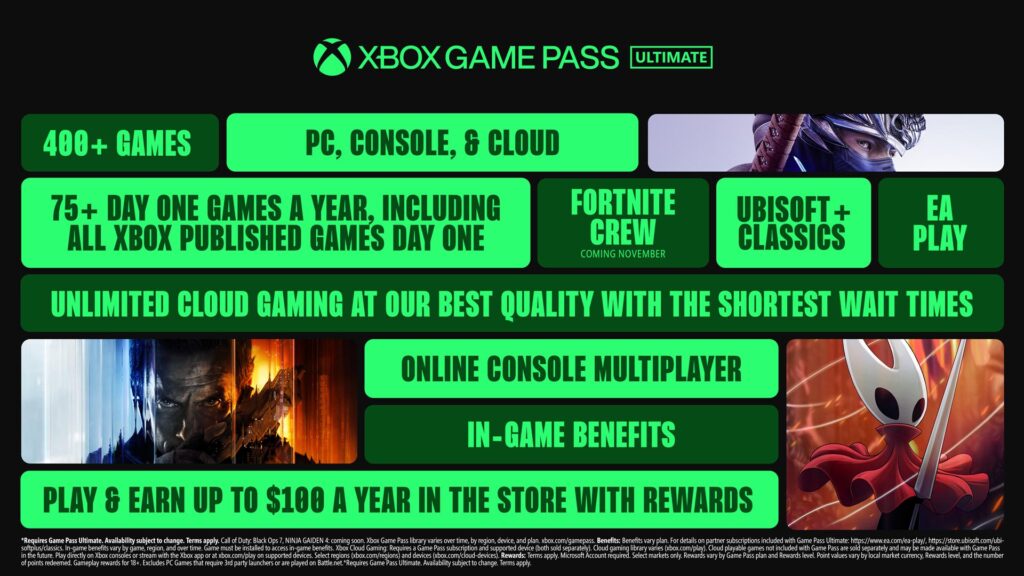Main Navigation Menu
© 2025 Tech Jacks Soutions, All Rights Reserved
© 2025 Tech Jacks Soutions, All Rights Reserved

The Xbox 30% profit mandate catastrophe has emerged as Microsoft demands unprecedented profit margins, leading to mass layoffs, studio closures, and aggressive price hikes across the ecosystem. WindowsCentral reports Microsoft CFO Amy Hood has forced Xbox to deliver an insane 30 percent profit margin, which is why everything is crazy right now. The unattainable target surpasses industry averages by 200-300%, pushing Xbox leadership to reckless extraction strategies that damage long-term viability for short-term metrics.

Reddit’s GamingLeaksAndRumours discusses Jason Schreier revealing Microsoft has pushed Xbox to hit profit margins of 30%, an ambitious target far higher than industry average. The Xbox 30% profit mandate catastrophe demands margins that Nintendo achieves through hardware profits, while Sony and Microsoft typically accept 10-15% margins in their gaming divisions.
AllKeyShop analysis shows PlayStation vs Nintendo vs Xbox sales and margin comparison revealing industry norms Xbox’s mandate triples. The competitive analysis shows that Nintendo’s unique position is selling profitable hardware, while competitors subsidize consoles through software, making 30% margins structurally impossible for Xbox’s business model.
ExtremeTech confirms Microsoft has never made profit on Xbox hardware sales, creating fundamental conflict with margin demands. The Xbox 30% profit mandate disaster forces extracting triple typical margins from software and services while hardware keeps losing money.
The mathematical impossibility becomes clear—achieving 30% margins requires either drastic cost cuts through layoffs and closures or aggressive price hikes across all revenue streams. Microsoft chose both, explaining the widespread destruction seen across the Xbox ecosystem.

Screen Rant connects Microsoft’s lofty expectations for Xbox explaining recent layoffs and price hikes as direct consequence of margin demands. The Xbox 30% profit mandate catastrophe turns creative studios into cost centers that must be eliminated when profit goals are prioritized over game development.
GamingBolt reveals Xbox has been asking its studios to hit higher profit margins since 2023, creating impossible pressure on development teams. The studio-level mandate means individual teams face closure threats unless they achieve profitability targets that are incompatible with AAA game development economics.
TechBuzz analysis shows Microsoft’s 30% profit push drives Xbox layoffs and shutdowns as mathematical reality forces workforce destruction. The Xbox 30% profit mandate disaster forces job cuts to cut costs while keeping revenue steady, explaining mass layoffs after Activision acquisition.
The human cost includes legendary studios like Arkane Austin and Tango Gameworks shutting down despite critical acclaim because profit margins are valued more than creative excellence. When CFOs demand impossible margins, cultural destruction becomes inevitable as bean counters override creative leadership.

Times of India reports Microsoft sets new target for its ‘struggling’ Xbox unit to perform above expectations, revealing internal perception. The Xbox 30% profit mandate catastrophe results from corporate viewing the gaming division as underperforming despite billions in revenue.
The “struggling” label reveals a disconnect where Microsoft leadership views failure as a profitable division not meeting arbitrary margin goals. When profitable businesses are called failures for missing impossible targets, organizational dysfunction leads to self-fulfilling prophecies through demoralization.
The corporate pressure explains why Phil Spencer’s increasingly defeated public appearances happen, as Xbox leadership knows that meeting demands often means destroying everything built over decades. The Xbox 30% profit mandate catastrophe forces executives to choose between their careers and protecting the ecosystem.
The performance expectations ignore the realities of the gaming industry, where creating content requires huge upfront investments with uncertain returns. When Microsoft applies software margin expectations to entertainment production, the category error results in impossible situations.

Reddit discussion reveals Christopher Dring confirming Game Pass is profitable only through creative accounting ignoring opportunity costs. The Xbox 30% profit mandate disaster involves claiming subscription profitability while undermining traditional sales, which generate higher margins.
The profitability claims overlook Call of Duty’s $300 million sales cannibalization and similar losses across the first-party portfolio. When accounting treats prevented sales as nonexistent rather than losses, the financial engineering conceals fundamental business model issues.
SensorTower’s pricing analysis demonstrates how subscription services destroy premium pricing power that enables 30% margins. The Xbox 30% profit mandate disaster causes a circular problem where Game Pass prevents margin achievement while being defended as profitable.
The creative accounting extends to development cost allocation where studios seem unprofitable because Game Pass receives content without covering full development expenses. When internal accounting penalizes studios for corporate strategy choices, the measurement system guarantees failure.

The Xbox 30% profit mandate catastrophe explains simultaneous price increases across consoles (+27%), Game Pass (+50%), and dev kits (+33%) as desperate margin pursuit. This coordinated effort reflects a CFO-driven strategy where every touchpoint becomes a profit center regardless of market consequences.
The price hikes demonstrate mathematical desperation, where achieving 30% margins forces extracting maximum value from a shrinking customer base. When platforms raise prices during market share declines, the death spiral accelerates as customers switch to competitors.
The margin mandate reveals Microsoft’s willingness to damage retail relationships through clearance sales while raising suggested retail prices. The Xbox 30% profit mandate catastrophe results in a schizophrenic strategy where volume matters less than the margin percentage on remaining sales.
The extraction includes hidden costs like removing family sharing, degrading service tiers, and eliminating regional pricing advantages. When every consumer benefit becomes a threat to margins requiring elimination, the entire platform value proposition collapses.

Nintendo achieves 30% margins through profitable hardware sales and low online infrastructure costs. Sony maintains 13% margins by focusing on exclusive content that drives full-price sales. The Xbox 30% profit mandate catastrophe requires Nintendo to adopt Sony’s business model — an impossibility from a mathematical standpoint.
The structural differences make comparison meaningless: Nintendo sells $200 hardware for $300, while Microsoft sells $500 hardware for $400. When business models are fundamentally different, applying the same margin expectations guarantees failure for loss-leader strategies.
PlayStation’s success with lower margins shows sustainable growth by prioritizing market share over profit extraction. In contrast, the Xbox 30% profit mandate catastrophe reveals Microsoft choosing short-term profits over long-term viability, eventually leading to platform irrelevance.
The obsession with margins ignores gaming’s hit-driven economics, where a few titles generate profits that subsidize overall portfolio development. When every product must reach 30% margins, the creative risks needed for breakout successes become impossible, resulting in mediocrity.

CFO Amy Hood’s 30% mandate reveals a fundamental misunderstanding of entertainment economics versus enterprise software. The Xbox 30% profit mandate disaster applies Microsoft Office profit margins to the creative industry, which requires entirely different financial models.
The CFO-driven strategy explains Xbox’s shift from a gaming platform to a tool for optimizing Game Pass spreadsheets. When financial executives override industry veterans, the predictable result is the destruction of decades of brand building for short-term earnings boosts.
Hood’s timing in enforcing the mandate during industry consolidation suggests a deliberate exit strategy, where margin requirements justify eventual divestment. The Xbox 30% profit mandate disaster creates conditions where selling or spinning off Xbox becomes inevitable when targets are unattainable.
The financial leadership’s approach explains Xbox’s systematic decline, which appears irrational from a gaming perspective but logical from a CFO’s viewpoint. When platforms become mere Excel tools rather than creative ecosystems, cultural decline precedes financial collapse.

The Xbox 30% profit mandate disaster reveals how Microsoft’s CFO, Amy Hood, demands impossible profit margins—triple industry standards—leading to mass layoffs, studio closures, and desperate price hikes. This mathematical impossibility destroys everything Xbox has built in pursuit of unattainable targets.
The 30% goal far exceeds industry norms by 200-300%, where Nintendo achieves profit through successful hardware sales and Sony accepts 13% margins focused on sustainable growth. Xbox’s loss-leading hardware model makes a 30% profit impossible without dismantling the entire ecosystem.
Studio closures, including Arkane Austin and Tango Gameworks, are direct results of margin pressures where creative excellence is less important than spreadsheet metrics. The human cost of thousands of layoffs serves the CFO’s demands rather than the health of the gaming industry.
The label “struggling” reflects corporate perception, where a profitable division is deemed a failure for missing impossible targets. This dysfunction creates a self-fulfilling prophecy, as demoralized teams cannot meet demands that threaten the platform’s survival.
Claims of Game Pass profitability rely on accounting tricks, ignoring $300 million in cannibalized Call of Duty sales and similar opportunity costs. This financial engineering conceals the fundamental incompatibility of the business model with a 30% margin requirement.
Price increases across consoles, subscriptions, and development kits represent a desperate attempt to meet impossible profit margins. These coordinated hikes, amid declining market share, accelerate a death spiral as consumers move away from what feels like exploitation.
Industry comparisons prove that a 30% profit margin is impossible—Nintendo’s profitable hardware enables margins Xbox’s loss-leading approach cannot achieve. PlayStation’s 13% margins highlight the sustainability that Microsoft’s demands hinder.
Amy Hood’s CFO-driven strategies apply software profit margins to entertainment, a sector with different economics. Transitioning from a gaming platform to a spreadsheet-focused approach signals cultural decline before financial collapse.
Smart observers should recognize the Xbox 30% profit mandate as a death sentence for the platform, where impossible demands guarantee ecosystem collapse. Microsoft has chosen short-term profit goals over long-term platform survival.
Gaming deserves leadership that understands entertainment economics rather than applying enterprise software metrics to creative industries. The Xbox 30% profit mandate disaster shows how financial engineering can destroy cultural institutions when CFOs override industry expertise.
